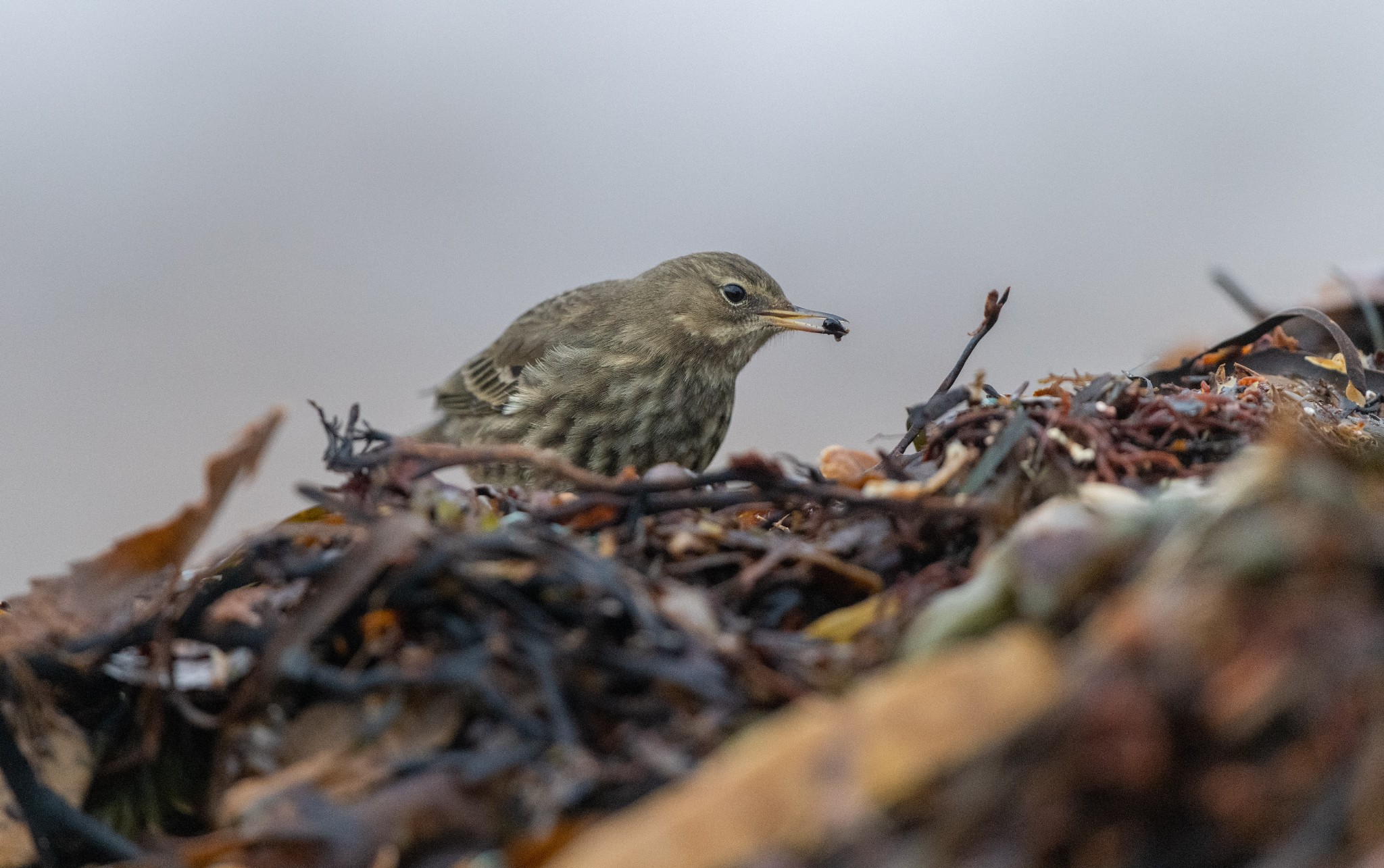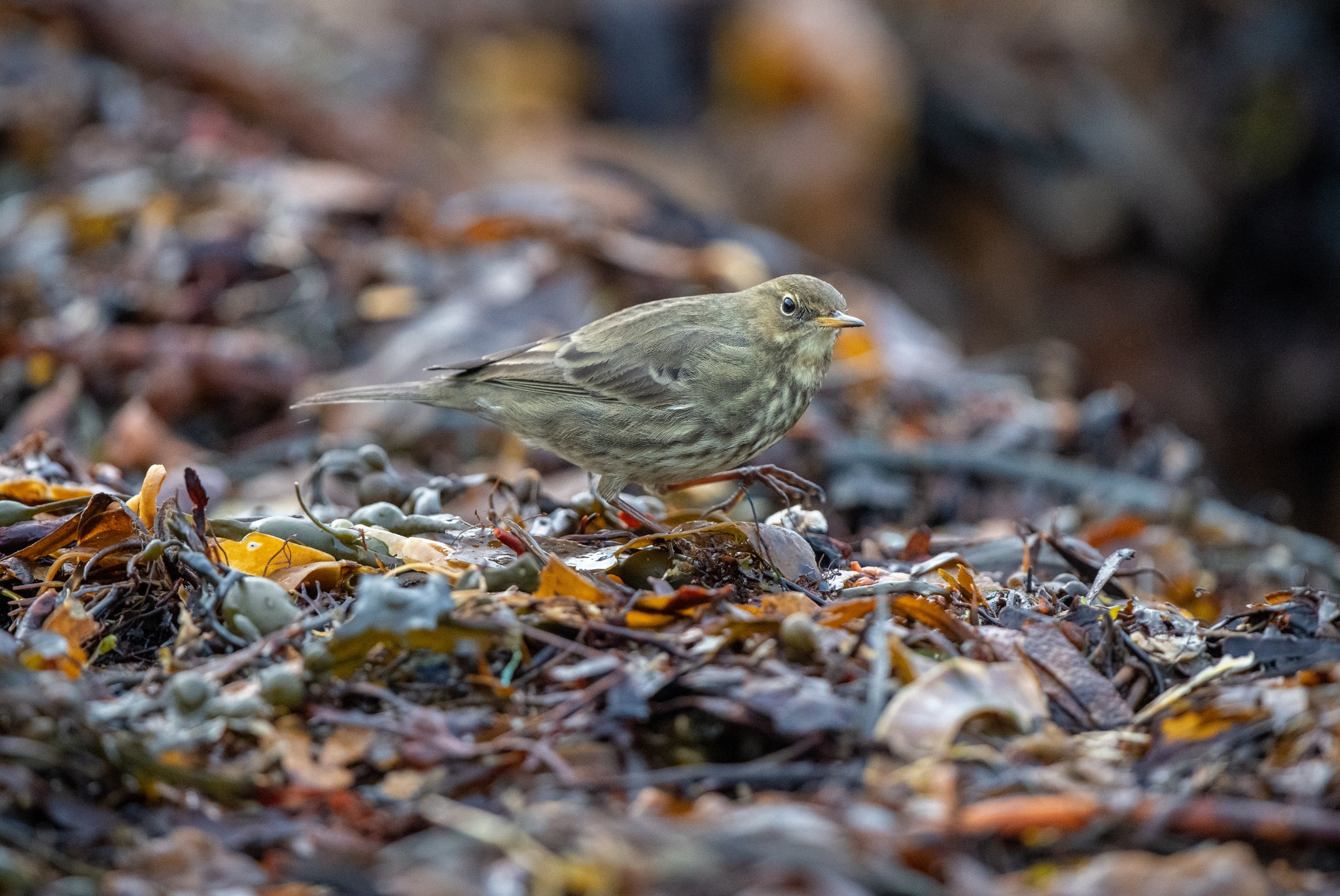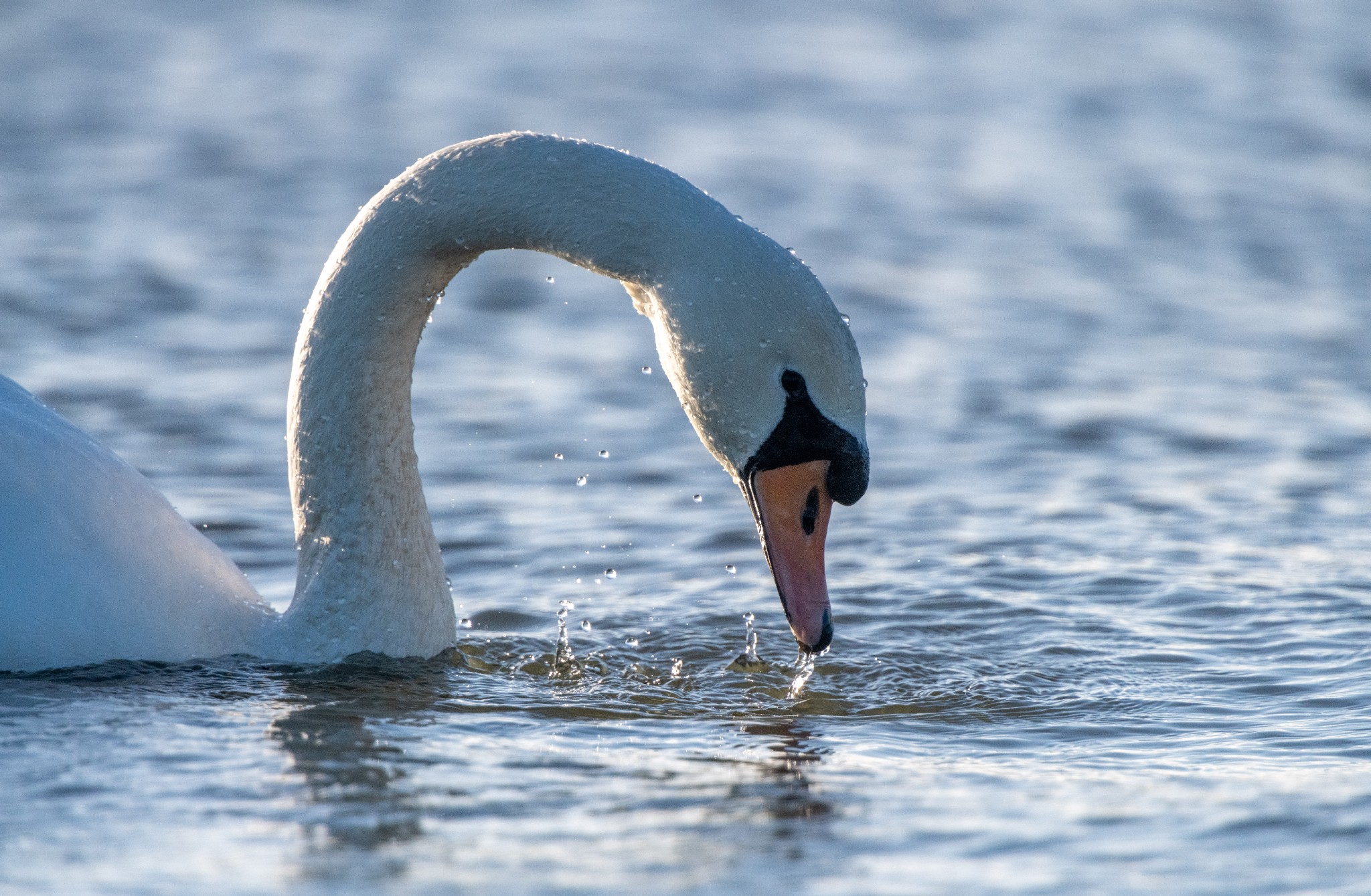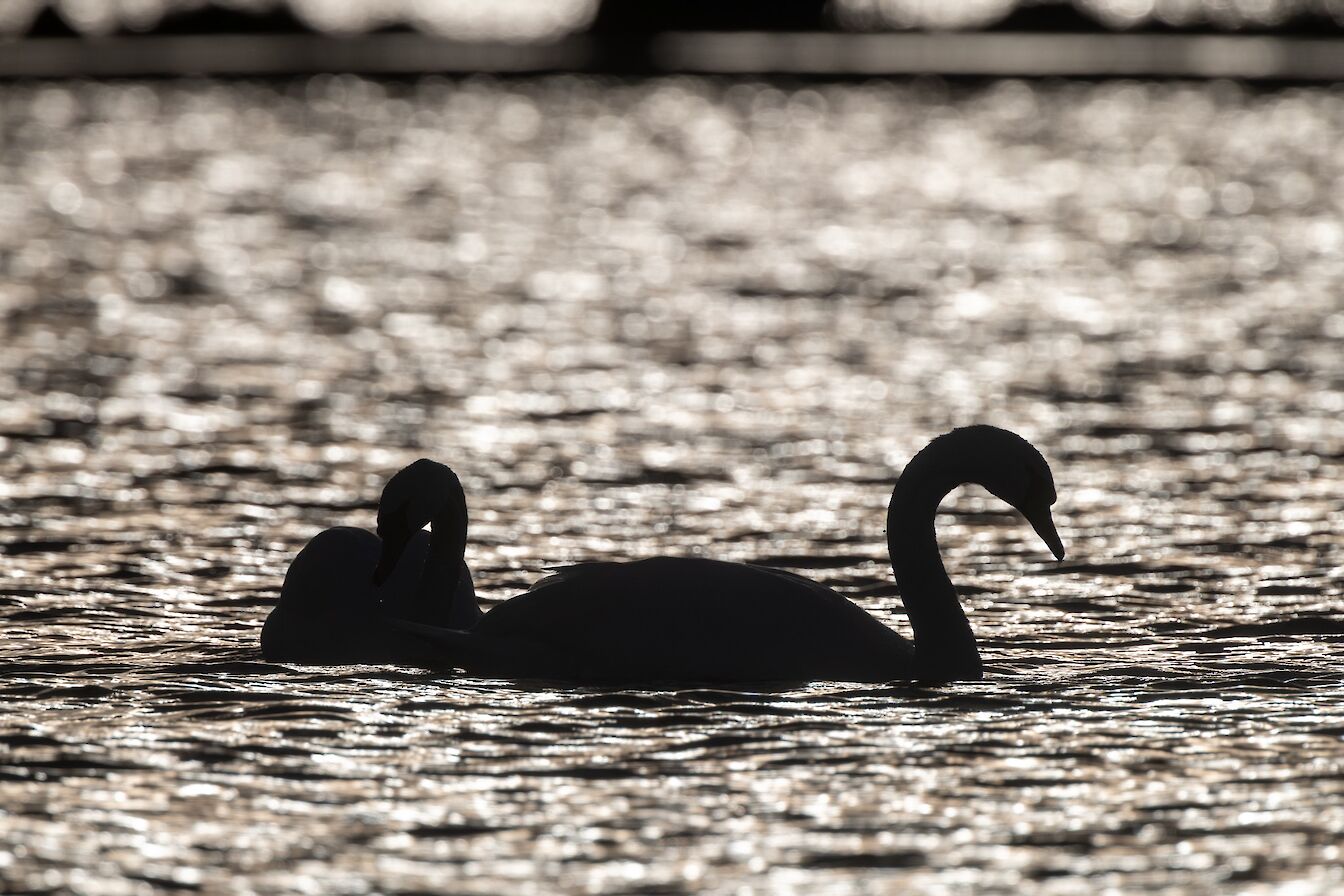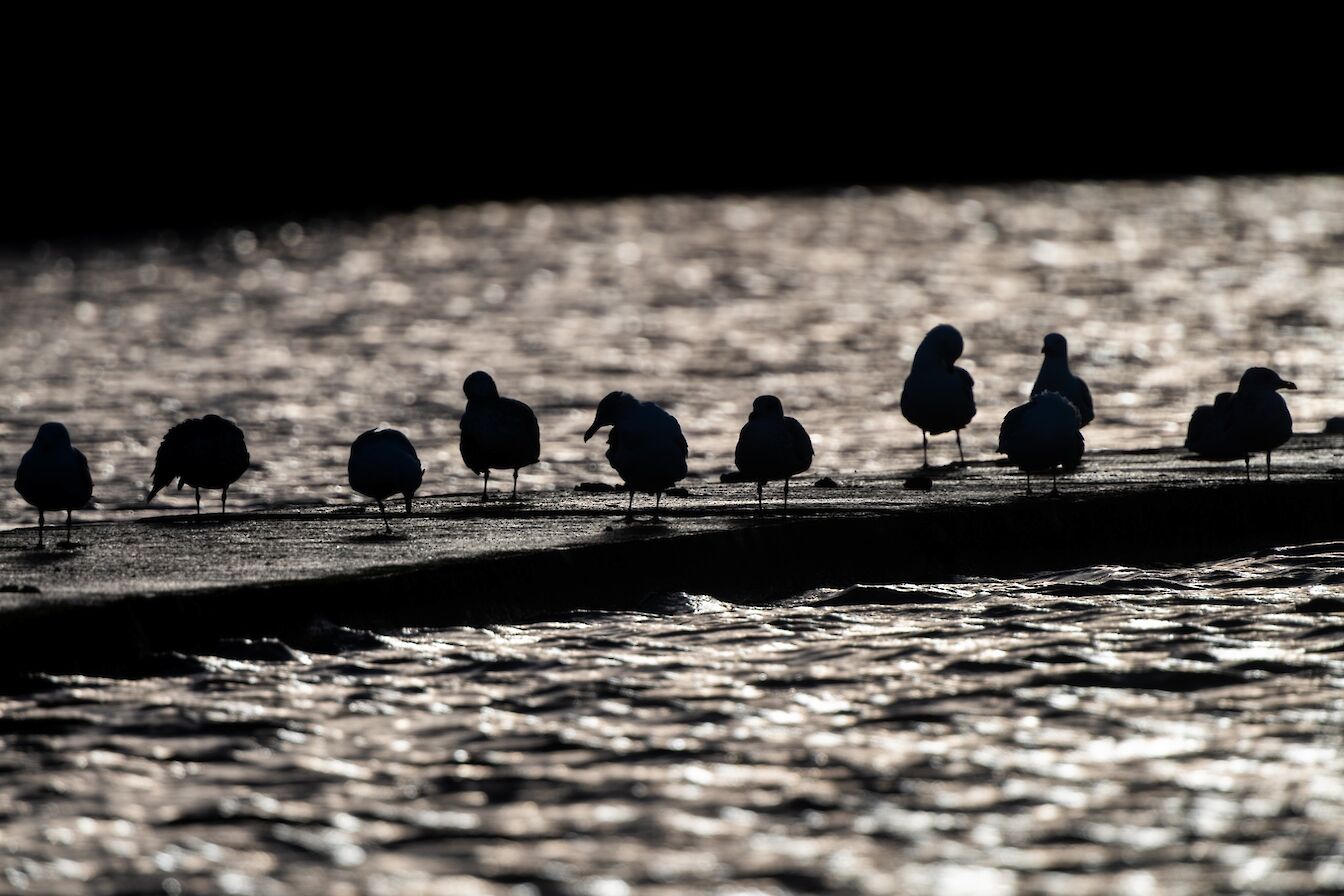The humble rock pipit receives little in the way of love. On a dull day and at a distance they appear to be little more than a small dark bird flitting about the shore, unremarkable even.
But this month I’m going to champion this hardly little passerine as I set myself a challenge of extremes - extremes of exposure to be exact.
Restricting themselves mostly to the coast, they are less common than their cousin the meadow pipit but are nevertheless easy to find. Its build is slightly ‘heavier’ looking with darker plumage. It can appear leggy at the right angle, with long claws at the end of long pale cherry-coloured legs. Granted, the rock pipit will never hog the limelight but up close there is beauty in its simplicity, its delicately streaked plumage taking on an olive hue. I can see six different individuals on the shore in front of me and they make the perfect subject for this challenge.
In a nutshell this challenge could be ‘how do I photograph a small, dark fast-moving bird against a dark background in dull light?’ There are plenty of things to overcome in this scenario. Rock pipits love to forage amongst the seaweed cast ashore during the winter months and I watch as one picks up small crustaceans, sand hoppers I think, whilst another takes a small dark oblong shape. I’ve no idea what it is but its evidently edible!
It’s a good chance to just sit and watch the birds and think logically about what I’m going to be up against. The most obvious perhaps is what the combination of all these ‘dark’ factors means. Low light and dark scenes mean slow shutter speeds. Unless I’m deliberately going for an image with some motion in it, I’m going to get camera shake.
What won’t help me eliminate the potential camera shake is my long heavy telephoto lens, so I brace myself against the sea wall and eventually end up using the seaweed itself as a crutch of sorts so that I can get low down for a more intimate angle.
So, how to get around the slow shutter speeds? I can increase my ISO and open my aperture, so I do both these things. I turn the dial to IS0 800 and open my lens as far as it will go, f4, and I can immediately see this is not going to cut the mustard. This only gives me a shutter speed of somewhere around 125th of a second and this won’t capture the pipit sharply whilst it’s feeding in the weed.
I put it all the way up to ISO 4000 with the resulting shutter speed much better and likely to give me a higher chance of success. I find myself having to override my instincts here. In my former life as a press photographer, we still used film and anything over ISO 800 was horribly grainy so I still have a hangover from those days. I know however that with some careful post processing, the high ISOs this camera (Nikon D850) is capable of means the image won’t be adversely affected.
As I lie on the soft seaweed, I realise I’m enjoying it, mostly I think because this is a hard task and one which is taking me back to the basics of knowing my camera and how it behaves. Not only do I have to override my own thoughts but also the principles of the camera itself. The matrix metering in these cameras is fantastic but in dark scenes it will still want to even things out by ‘adding’ more light, it will do this by ‘wanting’ slower shutter speeds. So, the camera can sometimes be your enemy. I get around this by adding some minus exposure compensation.
I look through some of my images on the back of the LCD screen and see that many of them aren’t sharp. The pipit is too fast for me and the auto focus system, or I’m not using it right. I’ve put on a 2x teleconverter in order to get closer images of the birds but this a mistake. As well as reducing my fastest aperture to f8 it also handicaps the autofocus system, and it hunts back and forth in the dull conditions. So, I take it off and simply wait for the pipits to come to me.
It works. The image has more clarity, is sharper and a little bit of light emerges to elevate the plumage a little from dark brown to those lovely olives.
By now the sun has come out and gives me an opportunity to test myself at the opposite end of the exposure spectrum. This time it will mean low ISOs, high shutter speeds and small apertures. The rock pipits were at Scapa beach so I drive the short distance into Kirkwall and the Peedie Sea.
I can see that a flock of wigeon has come out of the water and is grazing on the grass. It’s busy with walkers today and the ducks make their way back into the water. Winter light is both a blessing and a curse, there’s not much of it at this time of year but when it’s cloudy it really does feel dark, borne out by the settings on my Nikon. But the low sun can also be incredibly bright and it’s these conditions that I hope will allow me to make some abstract images.
I can see that the delicate ducks are silhouetted against the sun reflecting off the dappled water, but their shape isn’t very strong. When the image is broken down into something very simple, like a silhouette, then the other elements need to work and come into play, like strong shapes or textures. Fortunately, there is a bird here that fits the bill, the mute swan. A group laconically lift their heads from the water between bouts of feeding underwater.
I move around so I can deliberately place the sun behind the birds that I’m interested in. Again, I’m using my 500mm f4 lens and a tripod and again I go through the same process as I did with the rock pipits and the challenges ahead of me. The highlights on the water are incredibly bright, some will have no detail at all but that’s ok, that’s what I’m after.
Just as I worked my way through my settings at Scapa, I do the same here, starting with some general settings of ISO 400 and f10. My exposure meter is warning me that I’m getting over 8000th of a second by flashing the number at me. 8000th of a second is the fastest this camera can do and so I know at these settings I’m wildly overexposed.
This will be a case of trial and error, and there is a lot of error before I’m happy. I go as low I can on the ISO to 64. This still allows me to get a fast shutter speed at a reasonable f-stop but even now I’m down at f16. Looking through the images I can see the highlights are still too ‘hi-key’ for my taste and so I end up using minus 3 stops on the exposure compensation dial. The camera must be wondering what’s going on by now as I never use these settings! Just as the auto focus didn’t like the darkness shown at it earlier it also doesn’t like the shimmering highlights and struggles. I change to manual focus, focusing at the base of the swan’s neck.
I see a flock of ringed plovers roosting on the path and apply the same principles but to me the scene feels a little messy, it feels difficult picking out any pleasing shapes amongst the flock of these short dumpy waders. I have a little more luck with a flock of gulls further along, the round harsh highlights now very bright.
But as the sun goes behind a cloud, with these settings all I’m left with is a heavily underexposed muddy image. I move on and see an opportunity with a mute swan again; as they feed the droplets it creates are caught by the light as they drip from its neck.
Lastly, I spot a snipe on the water’s edge. I hardly ever see a snipe before it has already flown off so I’m keen to get a few shots at least. I revert back to my standard settings and with the light behind me now the scene is vibrant, the patterns of the snipe looking exquisite in the winter sun.
Find out more about Raymond’s work via his official website. You can also find him on Facebook, Twitter and Instagram.
